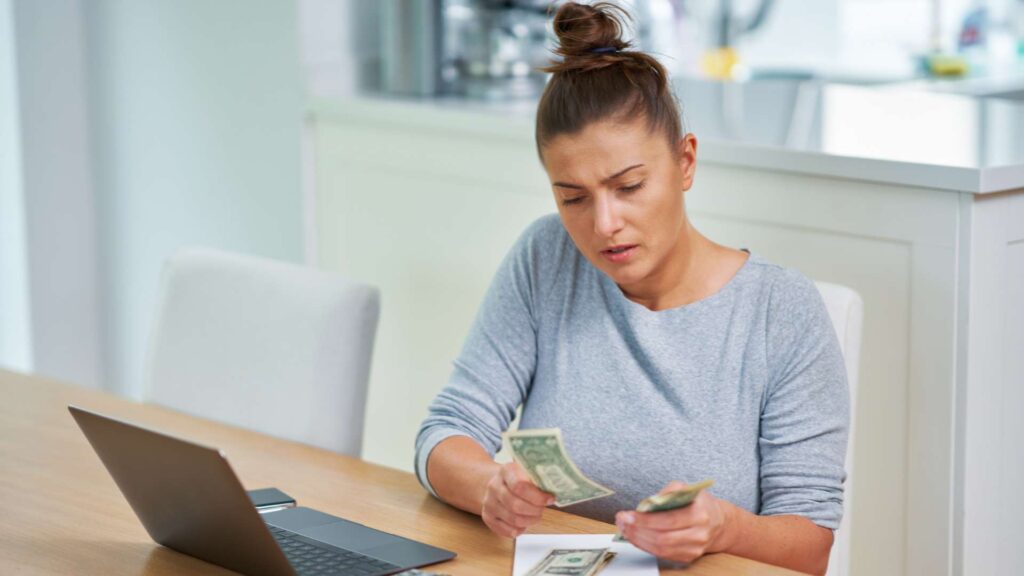Table of Contents
Your first home is a significant milestone and one of the most critical financial decisions you will ever make. People usually think it is enough to save for a down payment, but they go wrong here. Buying a house involves many untold costs that may take you completely off guard. You may have to consider closing fees, transfer charges, and regular upkeep expenses other than the regular documentation and title deed charges. That’s why knowing how to financially prepare for buying your first home is essential to help you understand and plan for the full range of responsibilities of homeownership.
This article will guide you through every aspect of managing your finances and how to be financially prepared for buying your first home. You will also discover useful apps like Beem that can help shield you from surprise costs during the process. You can move ahead confidently if you are well-prepared and excited about purchasing your first home.
1. Know How Much Home You Can Afford
Be sure to assess your financial capacity before you begin your home search. You can follow a simple budgeting rule known as the “28/36 rule,”. This rule says that you should always try to keep your housing costs, such as your mortgage, taxes, insurance, and HOA fees, below 28% of your monthly income. All your debt payments, including your car loans, mortgage, and credit cards, should remain under 36% of what you earn monthly.
For example, if your monthly income is $6,000 before taxes, spend less than $1,680 on housing and less than $2,160 on all your debts. If you do this, you can stay on track with your monthly budget and financially prepare for unexpected expenses.
You can also use an online mortgage calculator; several apps are available. It shows you which homes best fit your budget based on income and current debts. Then, calculate your debt-to-income ratio to see if you meet the 28/36 rule. These steps help you create a realistic spending plan and prevent financial difficulties in the future.
Read related blog: Buying vs. Leasing a Car: What Role Does Credit Play?
2. Build a Dedicated Home Savings Fund
Creating a separate savings fund for your home purchase helps keep you organized and motivated. Generally, lenders demand a down payment of 3% to 20% of the home’s purchase price. But that’s not all you need to save for. Usually, appraisal fees, title insurance, attorney costs, and other paperwork expenses make up this closing cost, accounting for an additional 2% to 5% of your home’s purchase price.
A High-Yield Savings Account is perfect for this goal. Your money grows faster than regular savings accounts while staying easily accessible when you’re ready to buy. You won’t lose money as you might with investments, and you can withdraw funds quickly during the buying process.
You can start by setting clear monthly savings targets for your home savings fund. You should also figure out your ideal home price and timeline and work backward to see how much you need to save each month. Don’t leave this to chance—automate transfers from your checking account to your HYSA. This way, you save consistently without thinking about it.
The key is treating your home fund like a bill you must pay each month. Set up automatic transfers immediately after payday so the money is transferred before you spend it elsewhere. For help in choosing the correct account, check out Beem’s guide on the best HYSAs to reach your savings goals faster and financially prepare for a smooth homebuying journey.
3. Prepare for Hidden and Upfront Costs
First-time home buyers usually make the mistake of not considering the additional expenses after buying their new home. Home inspections usually cost $300 to $500, while appraisals can cost another $400 to $600. Moving expenses can easily hit $1,000 or more, depending on distance and how much stuff you own. Then you must spend on basic furniture like a couch, bed, and kitchen table.
You may also have to attend to immediate repairs. That leaky faucet or squeaky door might seem minor during your walkthrough, but fixing these issues costs money once you move in.
This is where Beem’s Everdraft™ becomes your financial safety net. Instead of scrambling with high-interest credit cards or expensive personal loans when these surprise costs hit, Everdraft™ gives you flexible access to funds exactly when needed.
Here’s what savvy buyers do: budget an extra 5% of your home’s purchase price just for surprise expenses. If buying a $300,000 house, set aside $15,000 for unexpected costs. Also, apply for Everdraft™ before you need it. Having this backup plan ready means you won’t stress about surprise expenses after closing. For more details, please read our guide on how Everdraft™ protects you from financial shocks.
Read related blog: How Much Emergency Cash Should I Keep at Home?
4. Improve Your Credit Score Before Applying
Your credit score directly impacts your mortgage payment amount. You get lower interest rates on your loan if you have a higher credit score. This means you pay less interest. Over 30 years, someone with a 620 score could pay $50,000 more than someone with a 740 score. A better credit score helps you keep more money for yourself.
Start enhancing your credit score months before you want to submit a mortgage application. Concentrate on paying down your credit card balances and other revolving debt first. This has the most significant impact on your score. Avoid starting new credit cards or taking out new loans during this time. Every new account you create can temporarily lower your score.
Check your credit report for mistakes, too. Errors happen more often than you think, and disputing them can boost your score quickly. Sometimes, a single correction makes a 20-point difference overnight.
First, verify your credit score for free using credit monitoring applications or through your bank. Then, establish automatic payments for all your accounts, at least the minimum amount due. Paying late lowers your credit score quickly, so automation helps avoid pricey blunders.
5. Get Pre-Approved, Not Just Pre-Qualified
There is a significant difference between pre-qualification and pre-approval, but many users fail to understand that. A rough estimation based on the basic information you provide is called pre-qualification. Pre-approval means a lender has verified your finances and agreed to lend you the amount. Sellers will take pre-approved buyers more seriously because they know you can close the deal.
When multiple buyers compete for the same house, pre-approval gives you a significant advantage. Sellers often choose pre-approved offers over higher bids from buyers with only pre-qualification letters. Your offer shows you’re ready to move fast.
Getting pre-approved requires real paperwork, though. You’ll need recent pay stubs, two years of tax returns, bank statements from the past few months, and permission for a credit report check. Lenders want proof of your income, savings, and spending habits.
Start gathering these documents three to six months before you plan to buy. This gives you time to fix any issues that come up. Also, don’t stick with your existing bank; look around and evaluate other lenders’ rates. Even a slight difference in interest rates saves you thousands over time.
Read related blog: Things To Stop Buying To Save Money
FAQs on How to Financially Prepare for Buying Your First Home
How much should I save before buying a home?
You should save around 25% of your salary to cover the down payment, closing, and moving costs in a year or so. For a $300,000 house, save about $75,000.
What’s the difference between pre-approval and pre-qualification?
Pre-qualification is a preparatory review based on the data given by the buyer or seller. This report is not foolproof. The pre-approval report is in-depth and includes a detailed report of your finances. It also includes credit checks to check the buyer’s credit score.
Can I buy a home with a low credit score?
You can buy a home with a low credit score, but getting a loan approval may be more challenging. You may have fewer loan choices and pay higher interest rates.
How does Beem Everdraft™ help homebuyers?
Beem’s Everdraft™ helps homebuyers by providing access to a flexible emergency cash option without credit checks, interest, or due dates. According to Beem, this can be especially useful for unforeseen expenses or delays that arise during the home-buying process.
Is it better to use a HYSA or a regular savings account for my down payment?
A high-yield savings account (HYSA) is better for saving your down payment than a regular savings account. HYSAs pay much higher interest, so your money grows faster. They are also safe and let you access your funds easily if you need them. This helps you reach your goal sooner.
Conclusion
Owning a house is a dream come true, but it’s not always easy. You need solid preparation, good sources to manage your finances, and enough savings to handle the hidden costs involved.
Your mortgage payment is just the beginning; there are added responsibilities that you should be well aware of and prepared to handle: property taxes, insurance, maintenance, and unexpected repairs are just a few on the list. Having a financial safety net makes all the difference when unexpected costs arise.
The good news is you don’t have to figure this out alone. Tools like Beem’s Everdraft™ give you that crucial financial flexibility when surprise expenses hit. High-yield savings accounts help your down payment fund grow faster. Smart budgeting resources keep you on track throughout the entire process. Every step you take today brings you closer to your new home. Start with one action today – check your credit score, open a dedicated savings account, or gather your financial documents. Small steps add up to significant results.
Are you eager to make better financial decisions? Beem’s tools and tips that can bring you one step closer to your dream home. Download the app here.















































